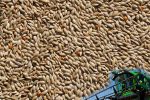http://www.wildbirdseeds.co.uk/lincs/index.php/whats-that-bird-mainmenu-7/61-wren#sigProId107032f432
Identification
Wrens are familiar birds with rich brown finely barred plumage, a tiny fat body and a spiky tail which is always held cocked up. Never seems to stay still for long unless singing for a mate.
Habitat
Breeds and winters in gardens, woodland, parks, waste ground and hedges.
Behaviour
The male Wren has been shown to build several nests which he then tries to show off to potential mates. Once a female has decided on a nest-site, the male continues singing and displaying to attract other females.
If more female are attracted he does not help raise the young, but one the are no spare females he will then help the female to rear the young.
In a good territory there could be plenty of food for several females to be able to rear the young without the help of the male.
In Wrens it is sometimes the female which sings and its one of the loadest songs you will hear in your garden.
In winter, Wrens often huddle together in a communal roost, such as a nestbox in an attempt to keep warm on cold nights. There have been cases where more than 60 birds have been counted roosting in one nest-box.
Migration
Mainly sedentary or dispersive in Britain although some northern populations migrate south and westwards.
For more details click here









 What you feed is very important, there is a huge range of products you can feed
What you feed is very important, there is a huge range of products you can feed